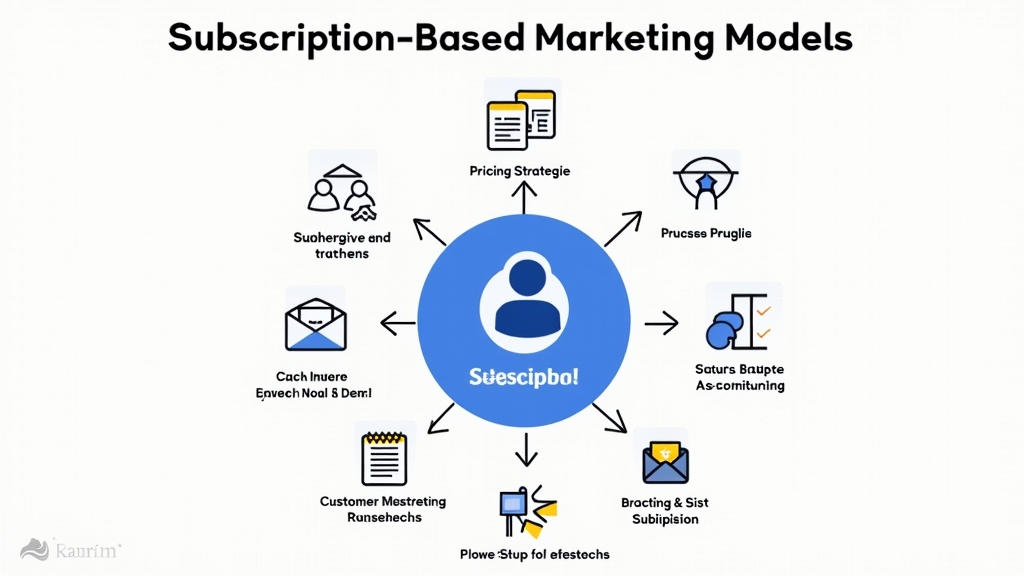Understanding Subscription-Based Marketing Models: A Comprehensive Guide
Introduction
What is Subscription-Based Marketing?
Subscription-based marketing is a business model where customers pay a recurring fee to gain access to products or services. This approach allows companies to build steady revenue streams while providing value to their customers. Instead of making one-time purchases, consumers subscribe for ongoing benefits, whether it’s monthly deliveries of goods or access to exclusive content.
The Rise of Subscription Models in Today’s Market
In recent years, subscription models have gained immense popularity across various industries. Companies like Netflix and Dollar Shave Club have shown how effective this strategy can be. The convenience and flexibility offered by subscriptions appeal to modern consumers who prefer hassle-free shopping experiences. As more businesses adopt this model, understanding its components becomes crucial for success.
Key Components of Subscription-Based Marketing Models
Pricing Strategies
Pricing strategies are vital in subscription-based marketing. Businesses must decide on the right price point that balances affordability with profitability. Common strategies include tiered pricing, where different levels offer varying features at different prices, and introductory offers that attract new subscribers with discounts for the first few months.
Customer Acquisition Tactics
Acquiring customers is another key component of successful subscription marketing. Effective tactics include targeted advertising on social media platforms and offering free trials or limited-time promotions. Additionally, referral programs can encourage existing subscribers to bring in new ones by rewarding them for their efforts.
Types of Subscription-Based Marketing Models
Product-Based Subscriptions
Product-based subscriptions involve delivering physical goods regularly to customers’ doorsteps. Examples include meal kits like HelloFresh or beauty boxes such as Birchbox. These services provide convenience and surprise elements that keep customers engaged month after month.
Service-Based Subscriptions
Service-based subscriptions focus on providing ongoing services rather than products. For instance, software-as-a-service (SaaS) companies like Adobe Creative Cloud allow users access to software tools through a monthly fee instead of purchasing them outright.
Content and Media Subscriptions
Content and media subscriptions give users access to digital content such as streaming services (like Spotify), online courses (like MasterClass), or news outlets (like The New York Times). These models thrive on delivering high-quality content consistently.
Benefits of Subscription-Based Marketing for Businesses
Increased Revenue Predictability
One major benefit of subscription-based marketing is increased revenue predictability. With consistent payments from subscribers, businesses can forecast income more accurately than traditional sales models allow.
Enhanced Customer Loyalty and Retention
Subscriptions also foster customer loyalty since they create an ongoing relationship between the business and its clients. Subscribers are likely to remain loyal if they feel valued through personalized experiences or rewards programs designed specifically for them.
Challenges in Implementing Subscription-Based Marketing Models
Managing Customer Expectations
Managing customer expectations can be challenging in subscription models. Customers expect quality service consistently; failing to meet these expectations may lead them to cancel their subscriptions quickly.
Competition and Market Saturation
As more businesses enter the subscription space, competition intensifies, leading to market saturation in some sectors. Companies must differentiate themselves through unique offerings or exceptional customer service while keeping prices competitive.
Best Practices for Successful Subscription Marketing Campaigns
Personalization and Customer Experience
Personalization plays a significant role in enhancing customer experience within subscription models. Tailoring recommendations based on user preferences helps increase satisfaction rates among subscribers while encouraging long-term retention.
Effective Communication Strategies
Clear communication is essential when running a successful subscription campaign—keeping subscribers informed about updates, changes in pricing plans, or new product launches ensures transparency that builds trust over time.
Future Trends in Subscription-Based Marketing
Technological Innovations Impacting Subscriptions
Technological advancements continue shaping how businesses implement their subscription strategies—from AI-driven personalization algorithms improving user experiences—to blockchain technology enhancing payment security—these innovations will drive future growth opportunities within this sector significantly!
Evolving Consumer Preferences
Consumer preferences are constantly evolving; today’s shoppers seek convenience alongside sustainability options! Brands focusing on eco-friendly practices will likely attract environmentally conscious consumers looking for ethical choices without sacrificing quality!
Conclusion
Recap of Key Points
In summary, understanding subscription-based marketing models involves grasping their components—from pricing strategies & acquisition tactics—to recognizing different types available today! While challenges exist—including managing expectations & fierce competition—benefits like predictable revenue streams & enhanced loyalty make it worthwhile!
The Future Outlook for Subscription-Based Marketing Models
The future looks bright as technological innovations reshape consumer interactions with brands! By staying ahead through personalization efforts & adapting quickly according changing preferences—businesses can thrive successfully within this dynamic landscape!
📢 Explore More: Continue Your Journey!
If this article helped you understand subscription-based marketing better, check out “Maximizing Customer Retention Strategies!” It covers powerful insights into keeping your subscribers happy while ensuring they stick around longer.














![NEEWER 55W 18"/45cm Ring Light Kit [New Version], 5600K Dimmable ...](https://m.media-amazon.com/images/I/414QLqvZWLL._AC_.jpg)








